After comparing the results of our cart investigations, we are in agreement that there may be some changing of shape for all objects, especially if energy is transferred and that energy has to go somewhere. We agreed that more evidence from slow-mo videos with other objects may be the way to go.
|
With some carts lying around in one of the science storage rooms, students agreed that using these carts could be wayyyyy better at controlling variables than dropping objects to collide from various heights and at various speeds. After colliding these carts with different materials on a track, we saw a lot of patterns: 1. There always seemed to be an energy transfer--the cart that was going faster became slower when it hit the other cart and the cart that was moving slower became faster the moment it collided with something else. 2. There was always some kind of bounce-back. Students still felt that the collisions were moving too fast for them to really see if there was any deforming/misshaping happening. So Mr. Carmalt and Mrs. Brinza made some slow-mo videos of each of the controlled investigations we saw. It was so cool to see that in some of the slow-mo videos, some of the solids deformed. This got us thinking...does every material deform somewhat?
It was unanimous! If we were going to figure out more about collisions, each 6th grade class agreed that we needed to do more collisions to see what would happen. Since it was after spring break, Mrs. Brinza had an opportunity to gather lots of random items based on student interest. Here are some pictures of various tests that students did! We dropped tennis balls, bricks, and books on things like marbles, sugar glass, and golf balls! After sharing out what happened in each of the various investigations, we realized there were so many variables we tested that we couldn't really come to any conclusions. Next steps--design some controlled investigations!
With all the talk about how damage does or doesn't occur during the SLEW of sharing out about collisions, we turned to writing our questions down publicly and sharing them with the class. And BOY did we get questions! I am so proud of the growth that 6th graders have made over the course of our year together! With so many interesting questions, we agreed we needed to come up with investigations to figure out answers to our questions, and these 6th graders certainly got creative! We're taking a break for spring break, but we're leaning towards actually colliding us things to give us more insight into what happens in collisions with any and all types of damage!
With our Initial Models in hand, we convened in a scientist circle to come to an initial agreement about what's happening in a collision, regardless of damage. We didn't agree on much, but generated a lot of ideas we are needing to consider as we try to explain these phenomena!
After sharing statistics on cell phone damage with 6th graders, the stories about their own phones or others phones getting damaged were flying around the room! We agreed we wanted to recreate some of these scenarios, and instead of using real phones, some CD cases would suffice! So a lucky two students from each class got to recreate their "cell phone breaking" story! From these experiences, we all agreed we had related experiences. Everyone had a chance to think about a time when two things collided and either produced damage, or didn't produce damage (surprisingly)! We categorized our related phenomena into three categories: As always, we try to explain what's going on, so students were asked to make initial models for a collision of their choice, regardless of damage: After sharing with a partner, students are seeing that there are lots of similarities, differences, and questions that are coming out! Next steps: Our Initial Consensus Model and DQB!
|
Mrs. BrinzaWhen you stop to think about it, there are so many things that are colliding all the time! Why don't we always get damage? Archives
May 2022
Categories |
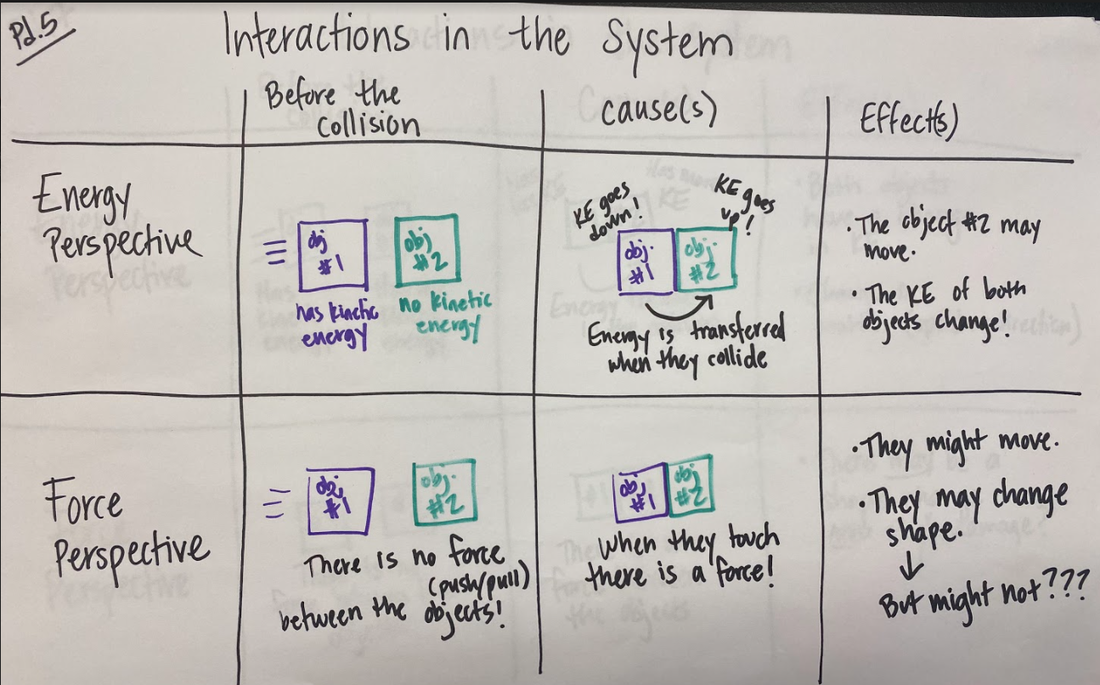
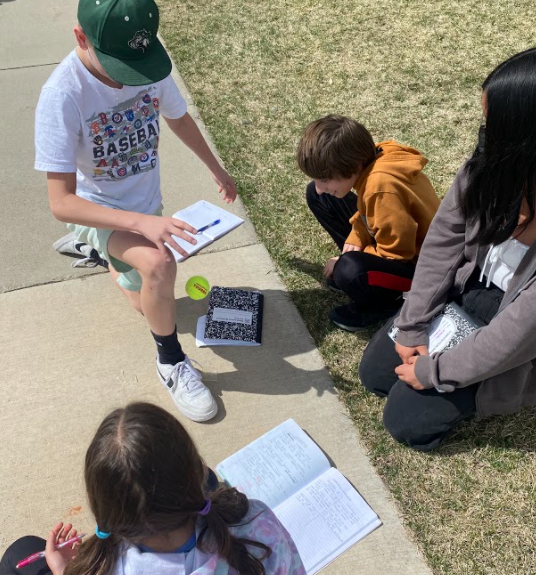
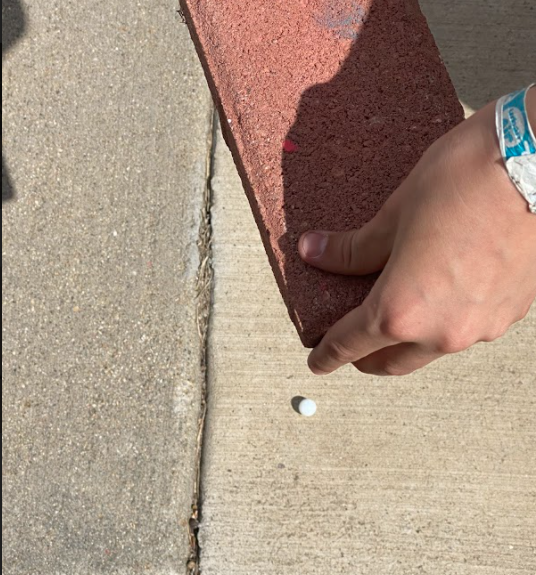
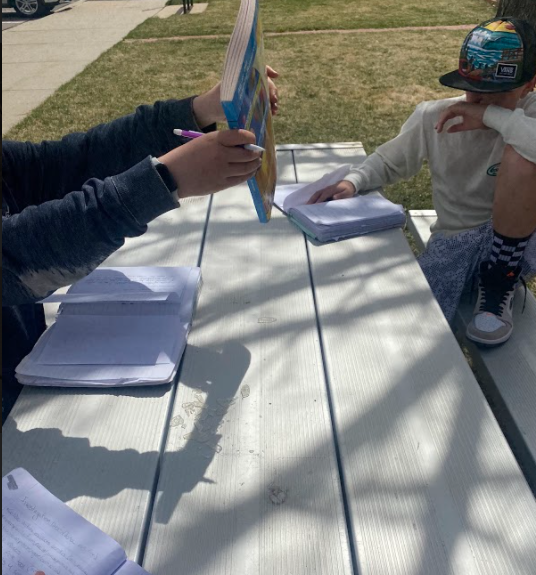
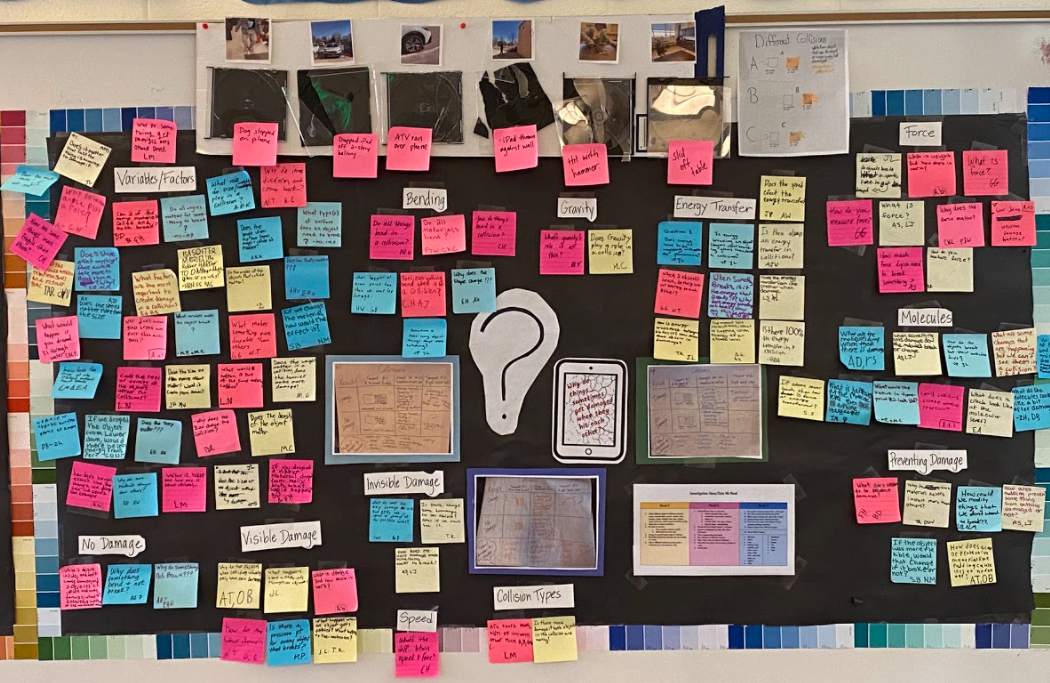
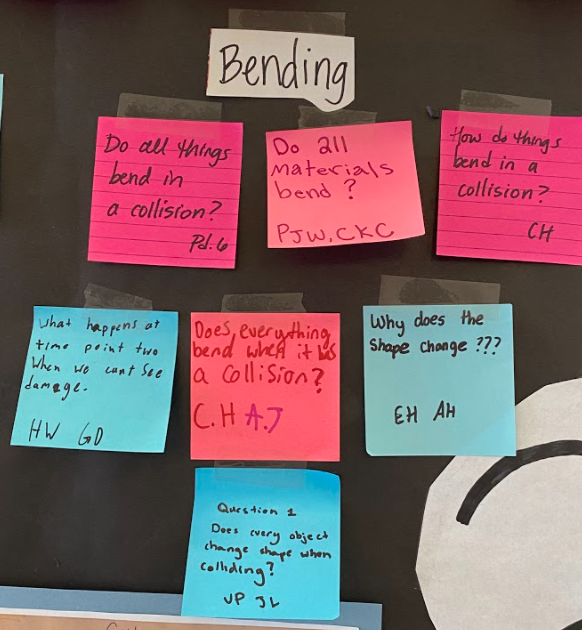
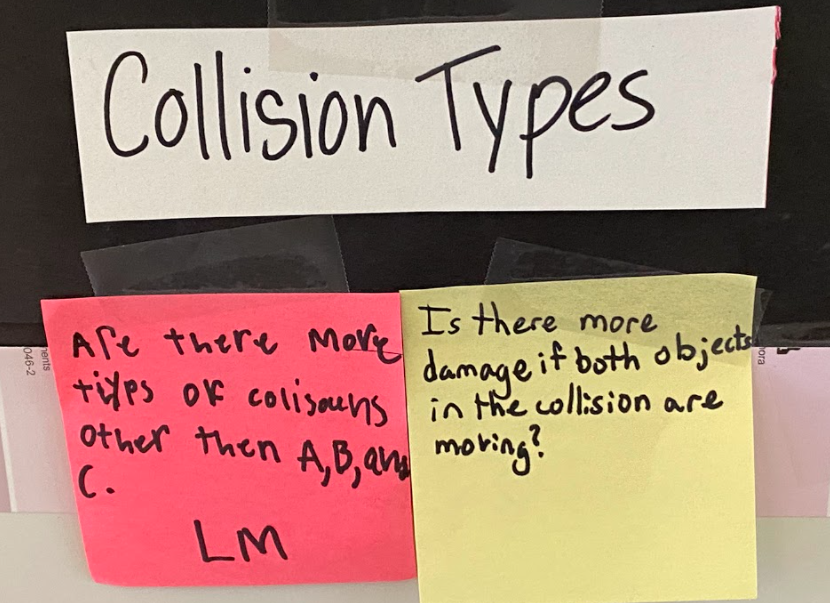
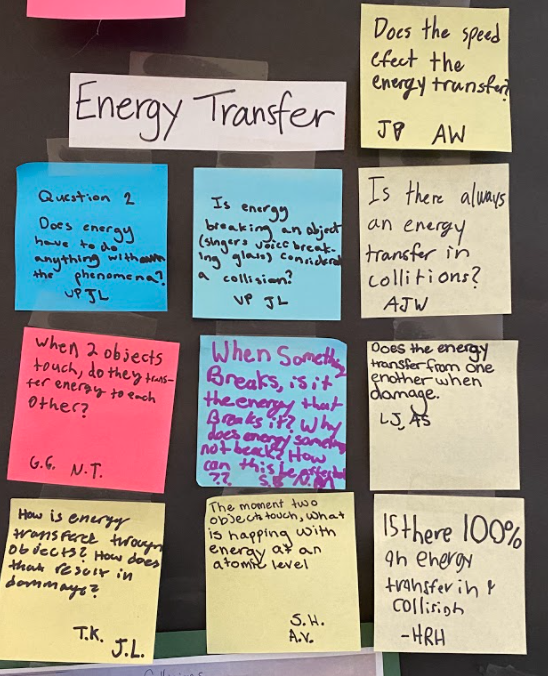
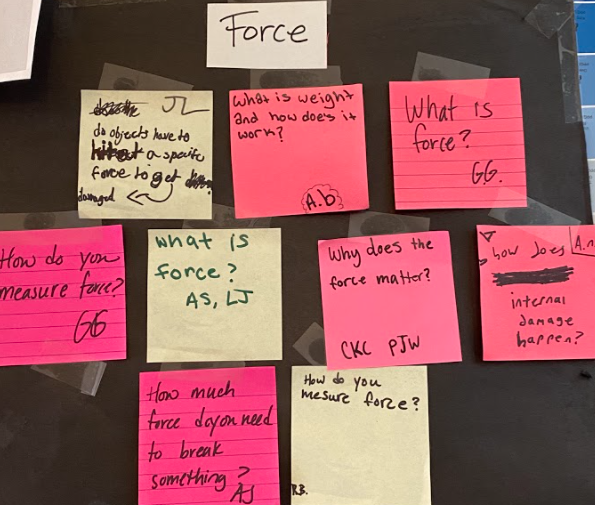
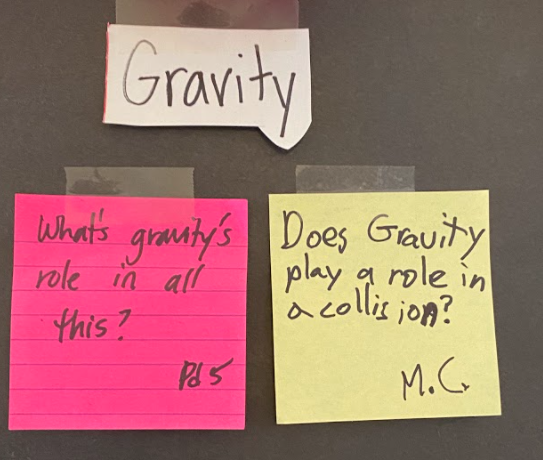
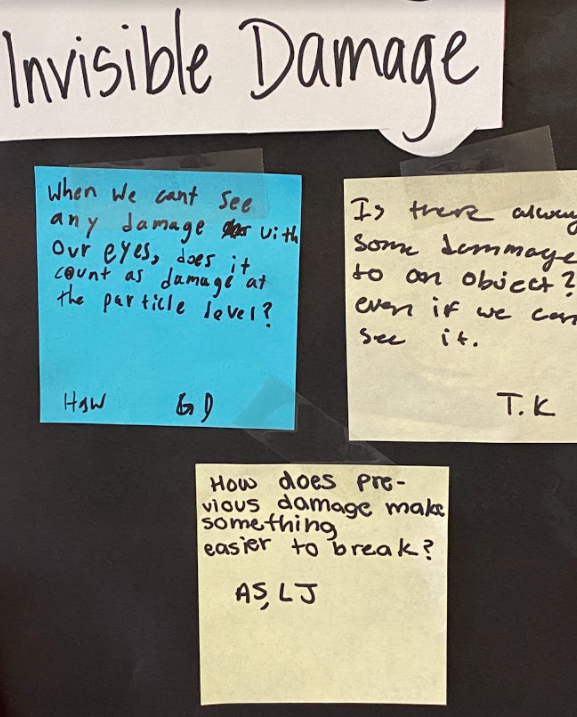
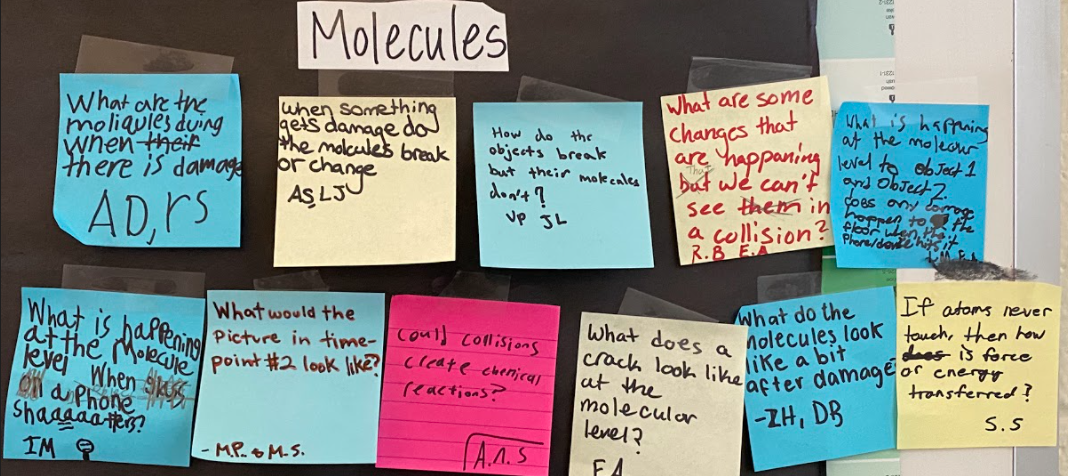
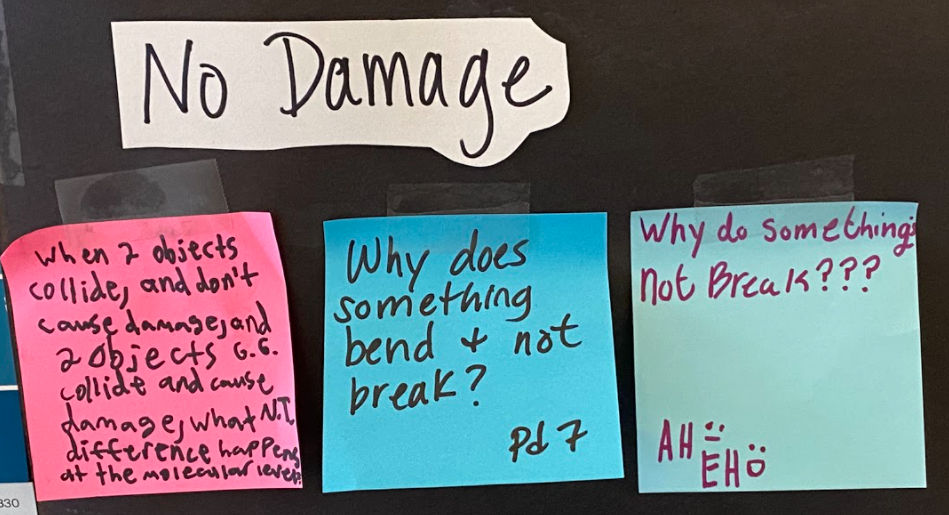
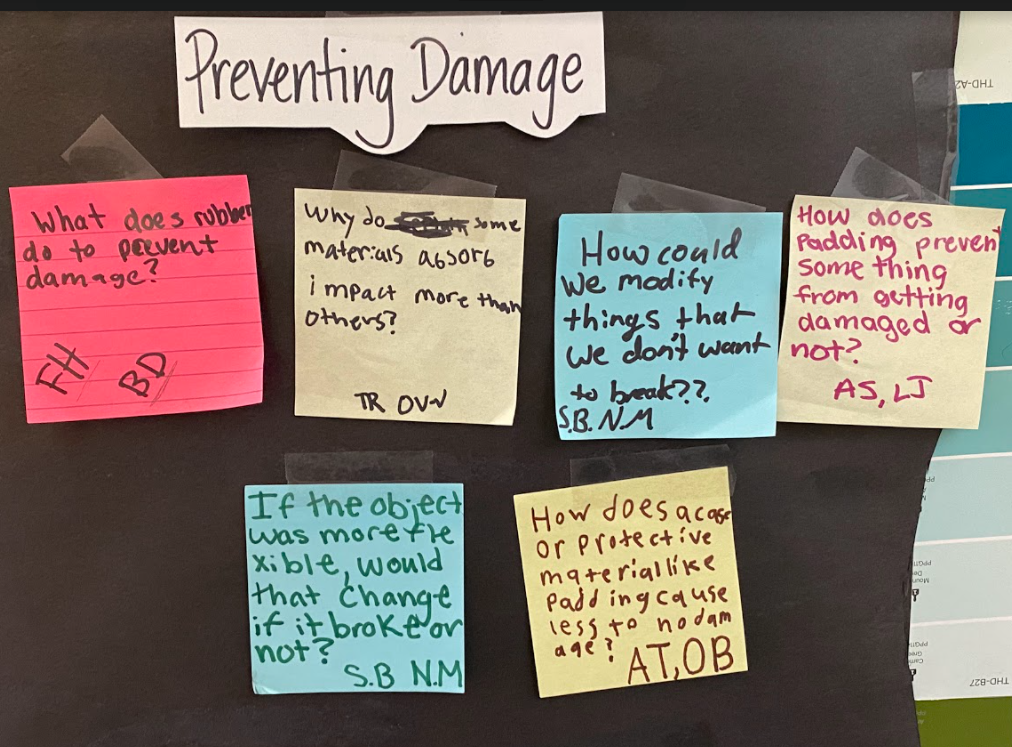
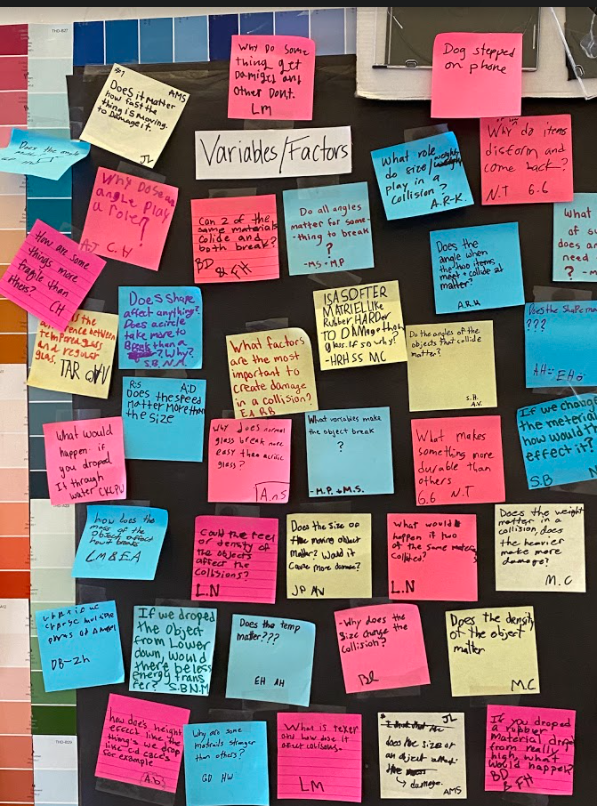
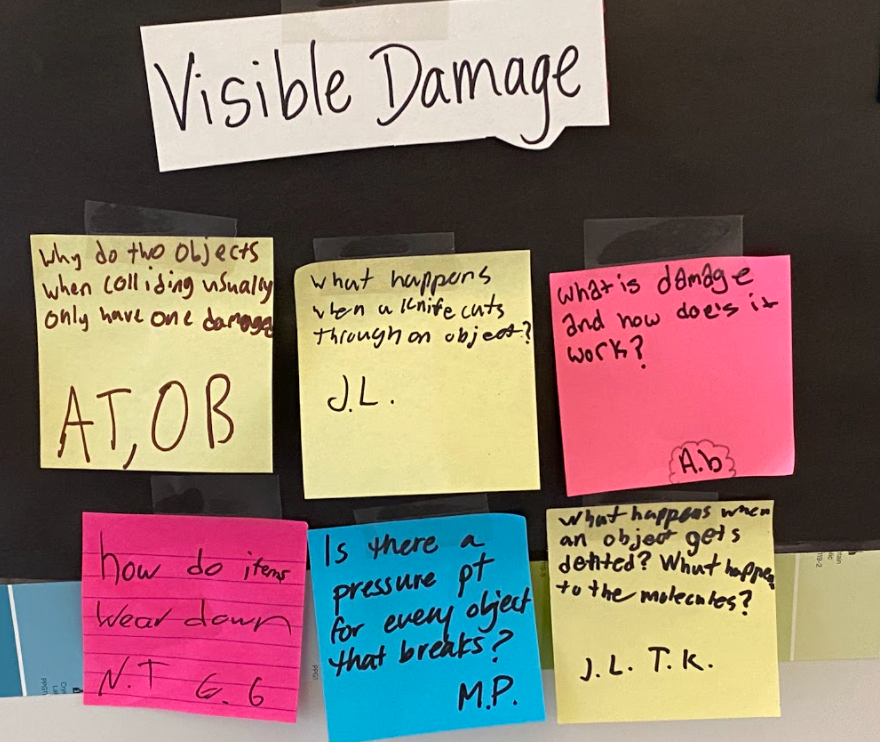
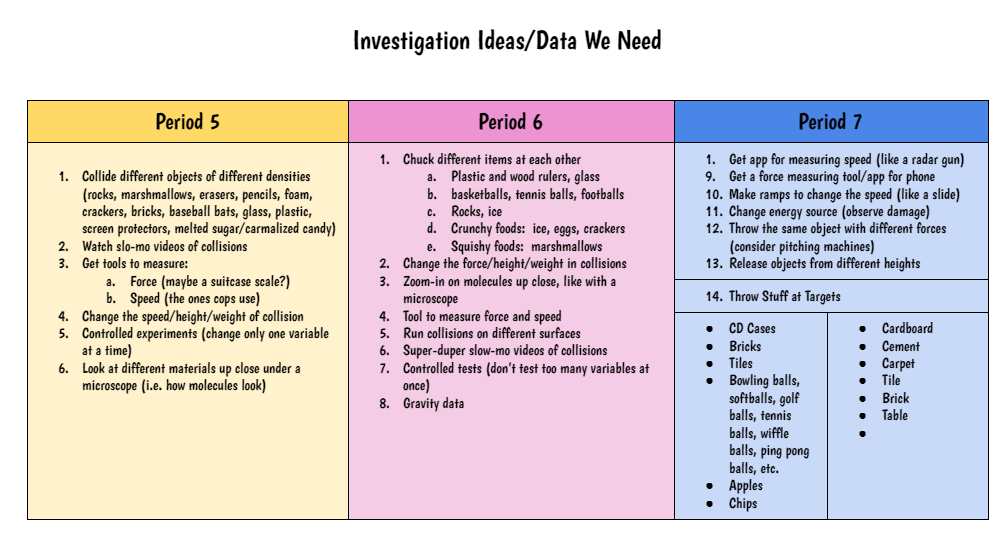
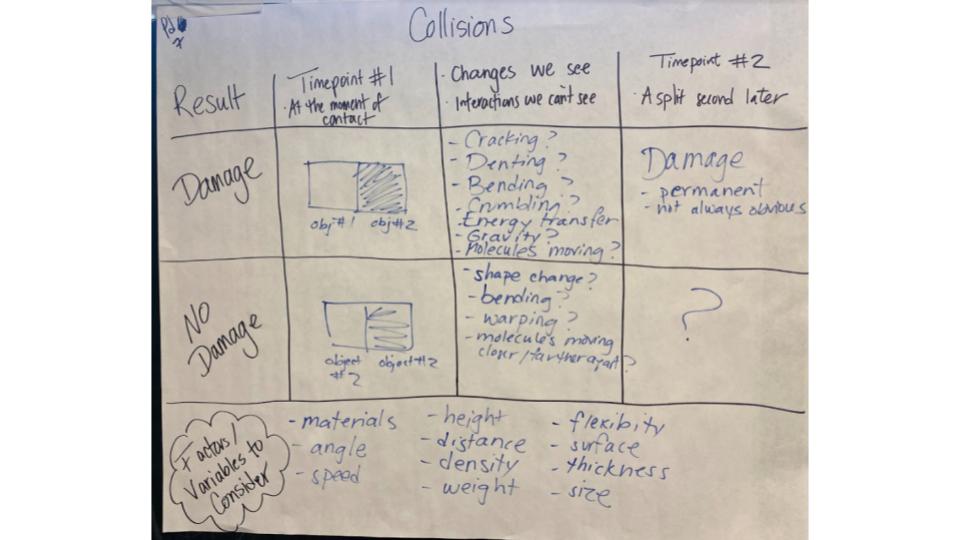
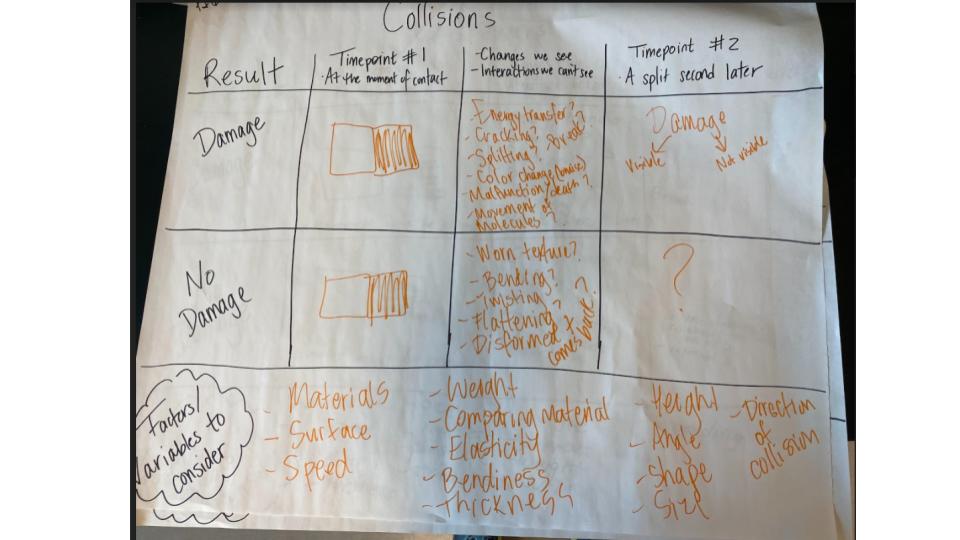
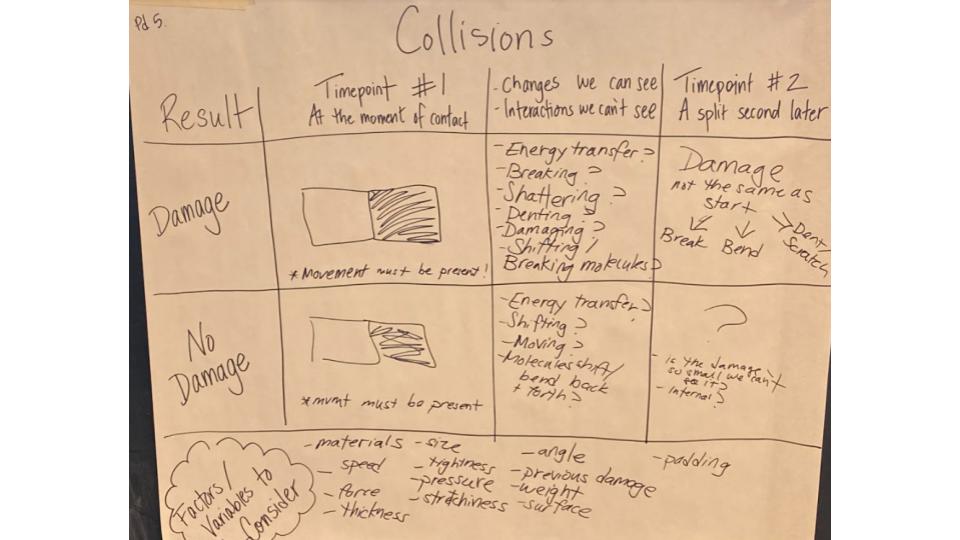
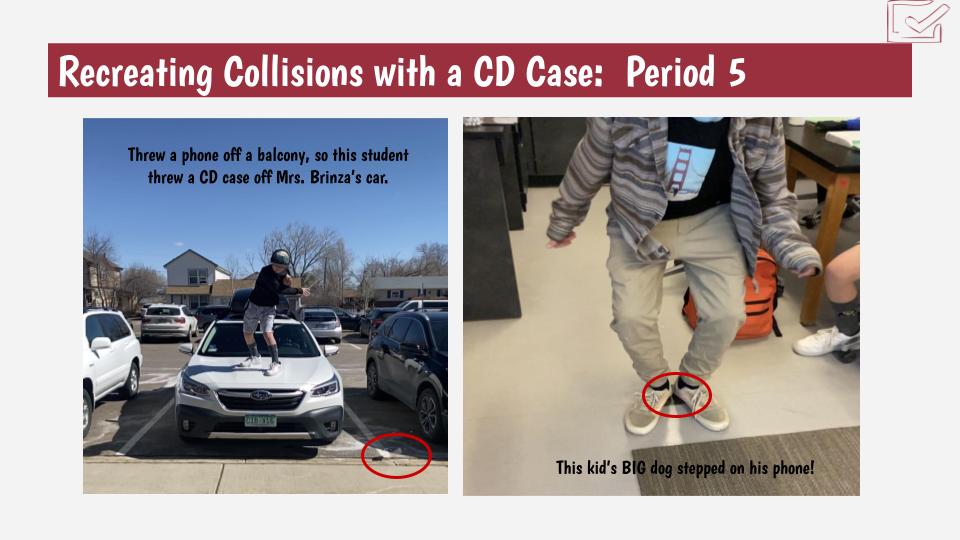
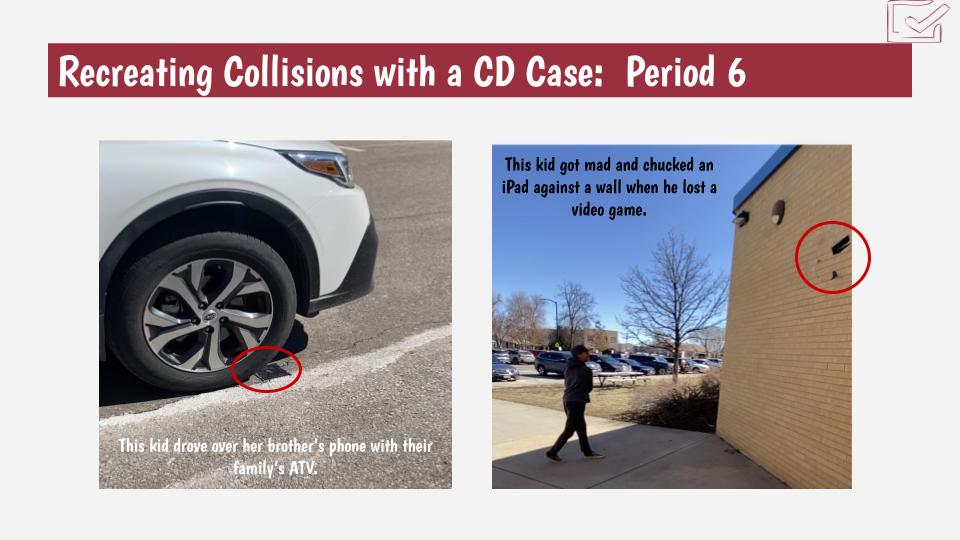
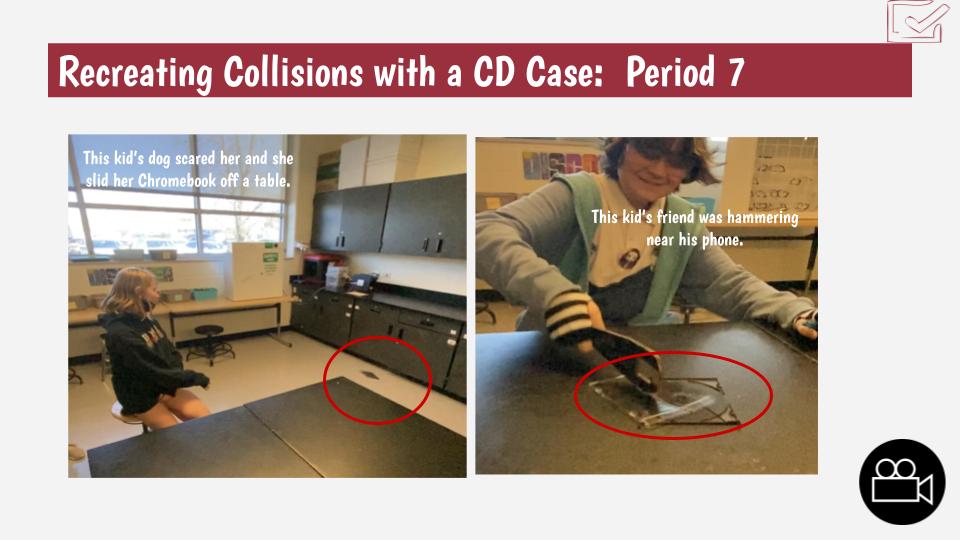
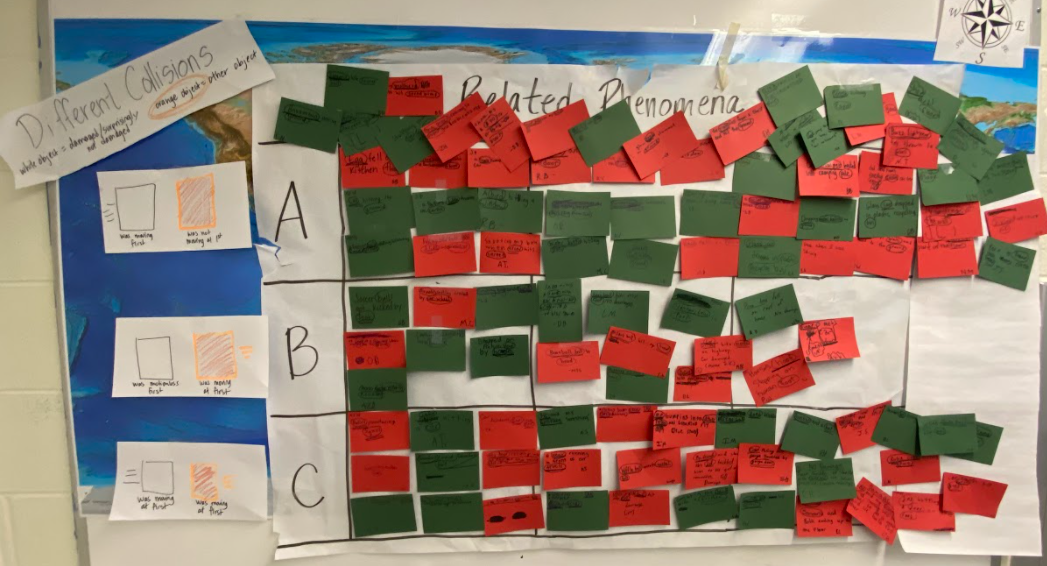
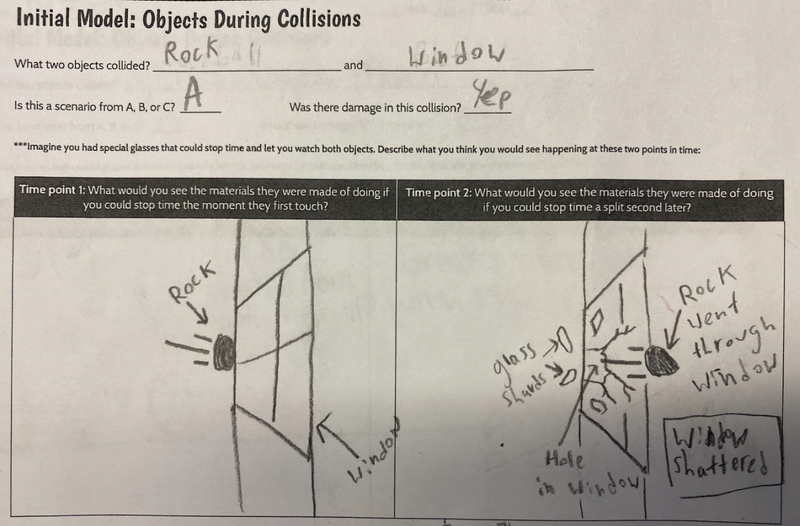
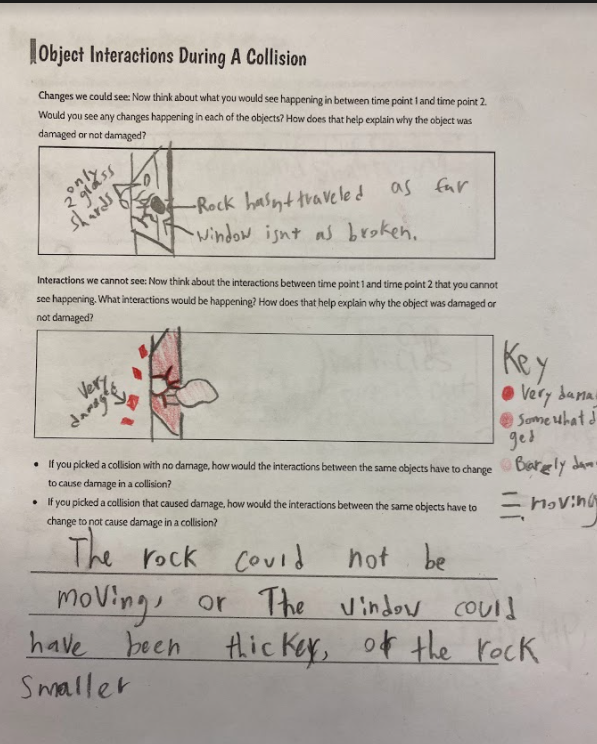
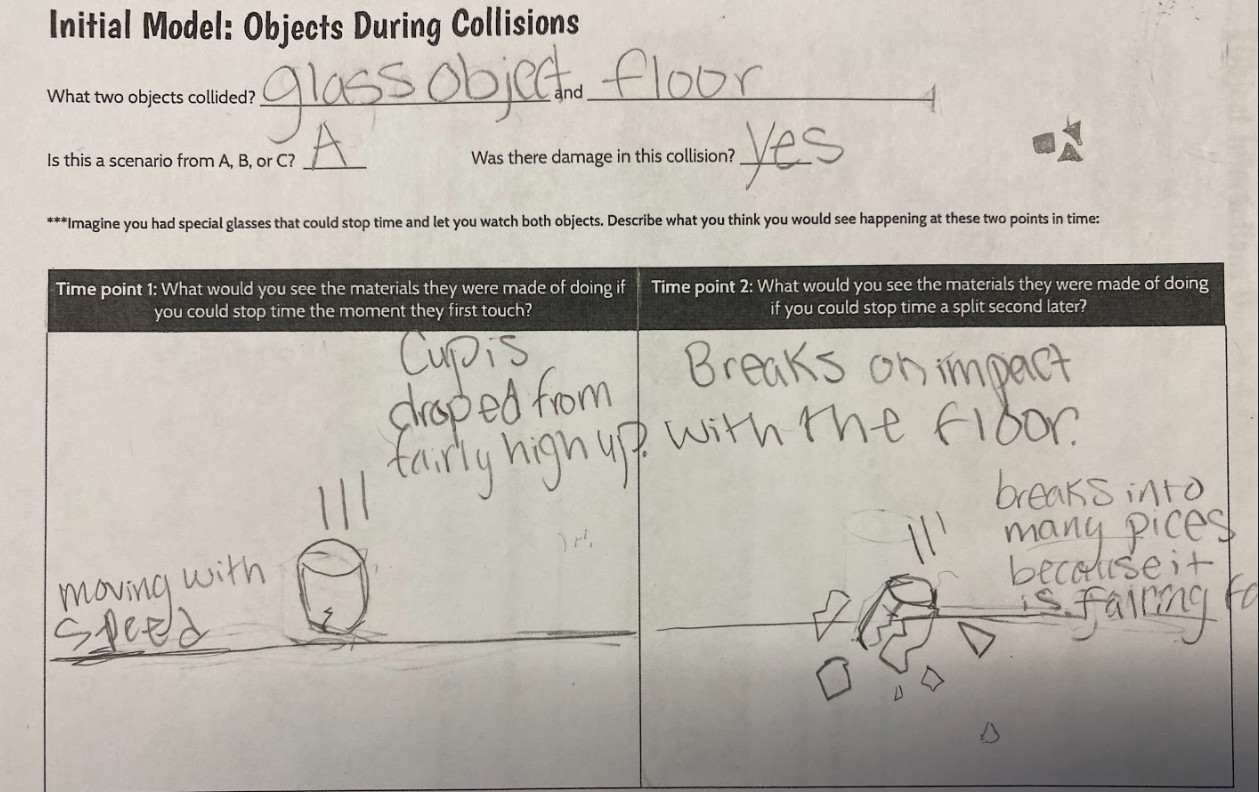
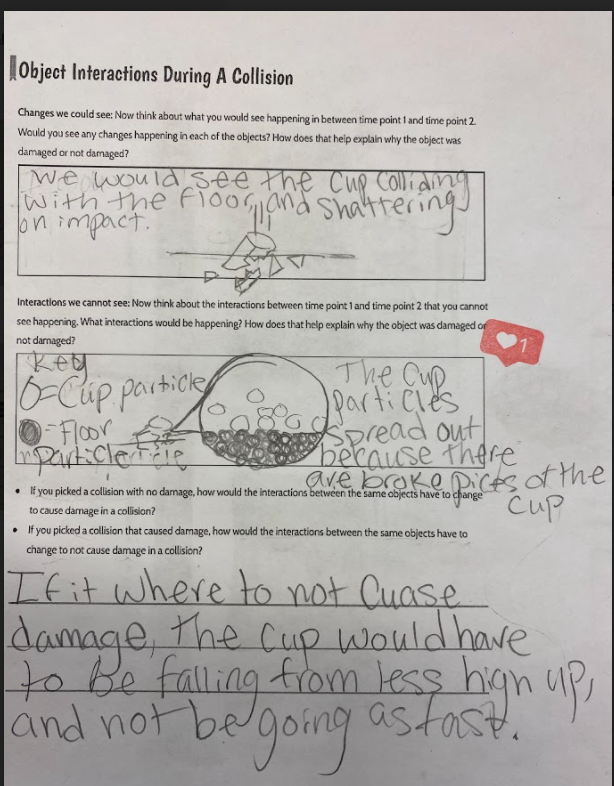
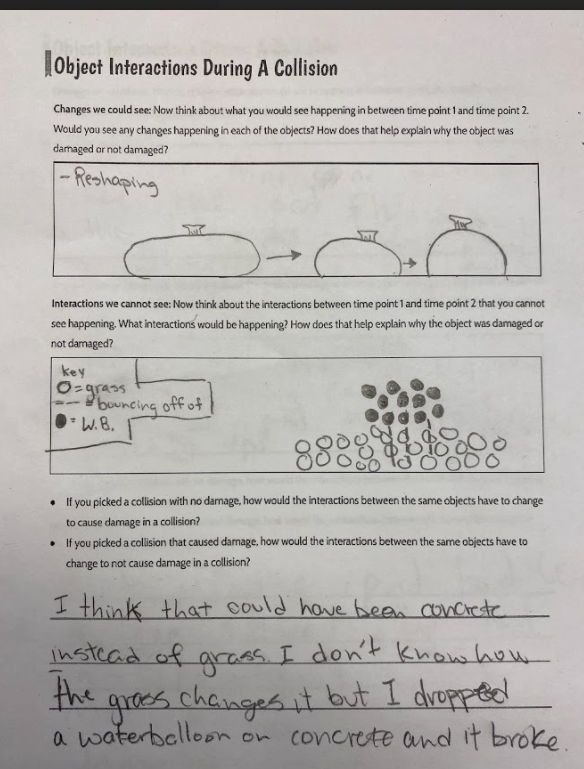
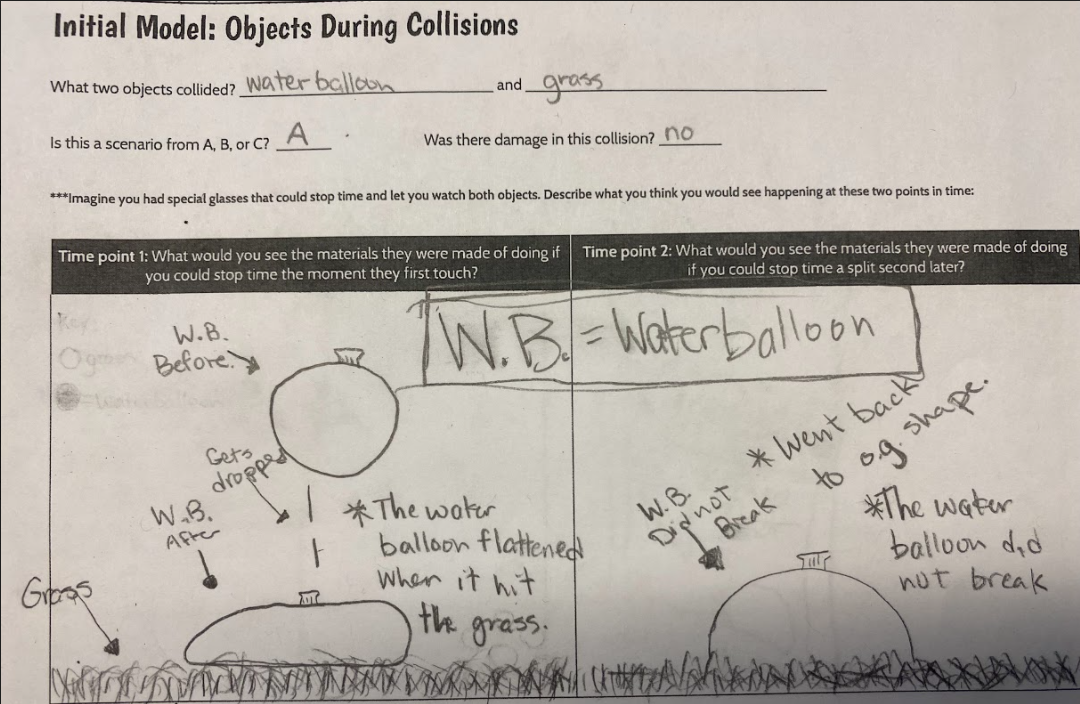
 RSS Feed
RSS Feed